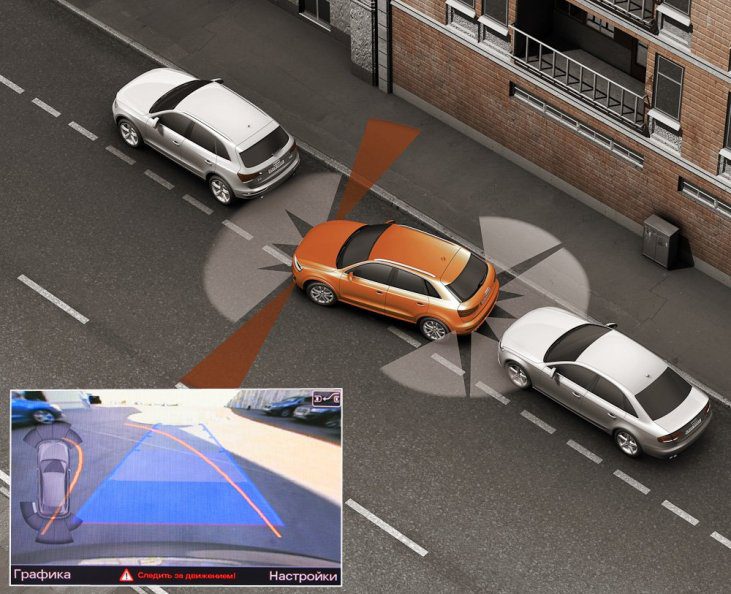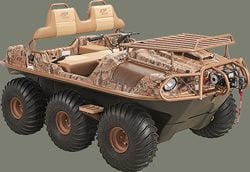
ParkAssist operation (automatic parking)
Who wants to be the king of the niche! Perhaps it was on the basis of this observation that some engineers began to develop a parking assistance system. Thus, limited space and poor visibility are no longer an excuse to explain the costly chips on the painted bumper or even the crumpled fender. And manufacturers are playing this game as the device has undergone many changes in recent years. Presentation of a system that specifically makes life easier for many motorists ...
Parking assistance? Originally sonar / radar ...
In fact, the parking assist system uses some of the basic functions of a primitive reversing radar. We remind you that during the maneuver, the driver is informed of the distance separating him from the obstacle by means of a modulated sound signal. Obviously, the stronger and longer the sound signal, the closer the pitfall. That's all that's going on in the cockpit ...
From a technical point of view, it should be understood that the parking assistance system is another type of sonar. In any case, according to its principle. Indeed, the transducer/sensor system emits ultrasound. They "bounce" (due to the phenomenon of echo) on obstacles before being picked up and sent back to the computer. The stored information is then returned to the driver in the form of an audible signal.
Obviously, for maximum efficiency, the scan angle should cover the widest possible area. Thus, Volkswagen Park Assist version 2 has at least 12 sensors (4 on each bumper and 2 on each side). Their location is obviously important because it will define a "triangulation". This principle allows you to determine the distance as well as the angle of detection in relation to the obstacle. On most models in circulation, the detection area is between 1,50 m and 25 cm.
This technology has undergone significant changes in five years.
After reversing radar, "on-board sonar" provided an answer to the vital question of any motorist looking for parking: "Am I going home, am I not going?" (assuming you are driving at a moderate speed, obviously). Now, combined with the right steering, the parking assist system allows drivers to park without even worrying about ... maneuvering. A feat that can be achieved using signals emitted by sensors mounted on the steering wheel or even on the wheels. The information gathered helps to determine the ideal steering angle. The promise to the driver to focus completely on the pedals ...
If progress is noticeable, however, it should be clarified that the car takes on its responsibilities within a certain framework. Thus, a parking space is suitable for VW-marked parking assistance if 1,1 m can be added to the size of the car. Not so bad anymore ...
Toyota paved the way in 2007 with its IPA (for Intelligent Park Assist) found on select Prius II models. German manufacturers did not lag behind for a long time. Whether it's Volkswagen with Park Assist 2 or even BMW with Remote Park Assist. You can also mention Lancia (Magic Parking) or Ford (Active Park Assist).
So how useful is a parking aid? Trust Ford is irreplaceable. After the launch of Active Park Assist, the American manufacturer began researching European drivers. It found that 43% of women did it multiple times to succeed in their niche, and that 11% of young drivers sweated a lot when performing such a maneuver. Later…
All comments and reactions
Dernier comment posted:
Socrates (Date: 2012, 11:15:07)
In addition to this article, I provide some details from a 70 year old user: Since May 2012 I have a VW EOS with DSG robotic gearbox and parking assist, version 2 (Créneau parking and in combat). This is impressive, I must admit, and it makes passers-by head, such quick and precise maneuvers! Moreover, when this device is connected to a robotic gearbox of the DSG type, because then the driver only has to check the brake pedal! Indeed, there is enough engine torque at idle to move the car forward and backward!
Thus, compared to a manual transmission, you no longer need to press the clutch pedal, the accelerator pedal and, of course, turn the steering wheel ... (only Forward & Reverse Era with gear selector)! Exits from the park, when one of them has been blocked in front and behind by other vehicles, is even more efficient than entrances: indeed, when choosing a place for an exit, my Park Assist is very “selective”! He will refuse sites that he considers too short! Although in the manual, I would certainly try to take them ...
(Your post will be visible under the comment after verification)
Write a comment
What do you think of the Citroën DS range?

